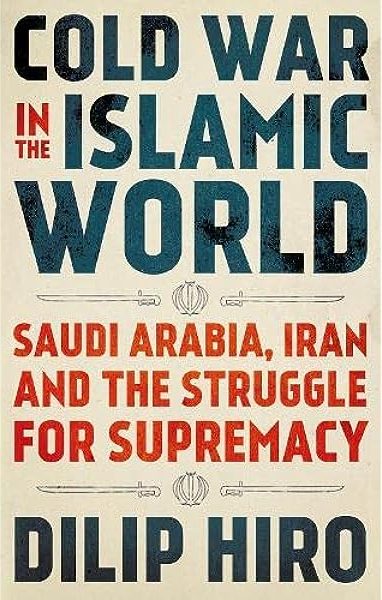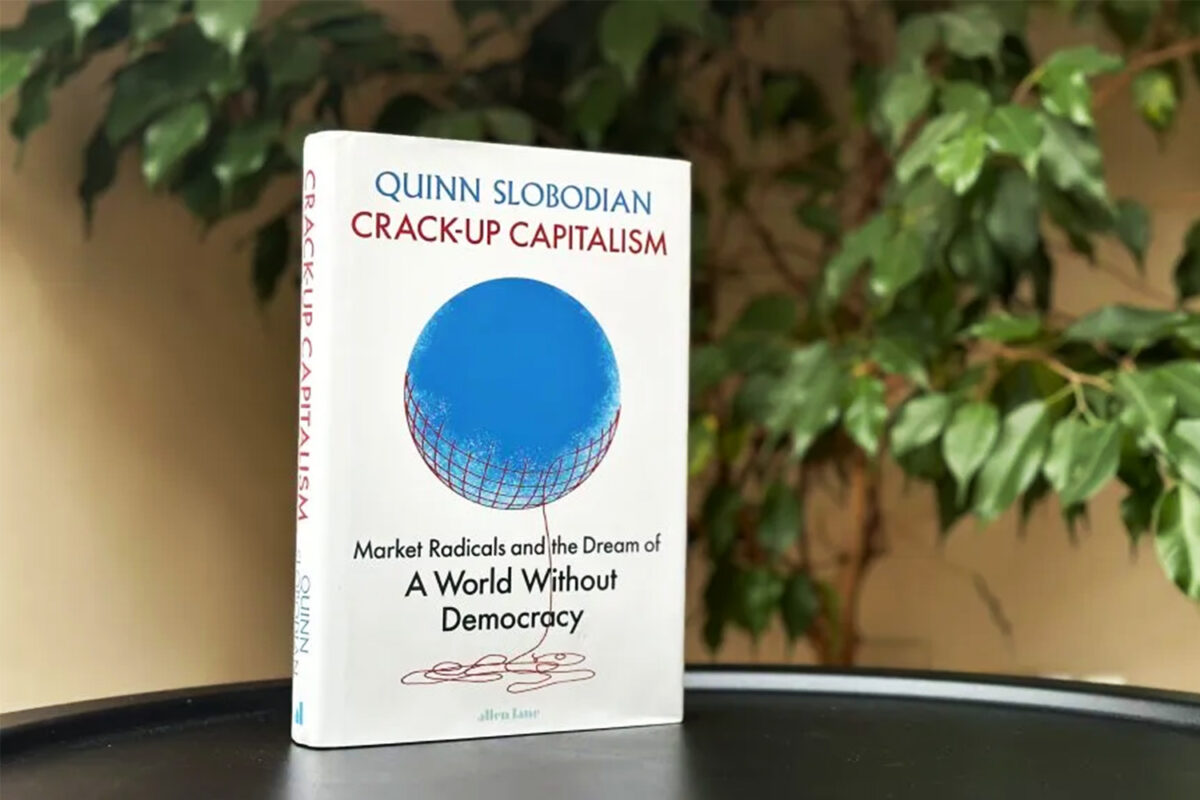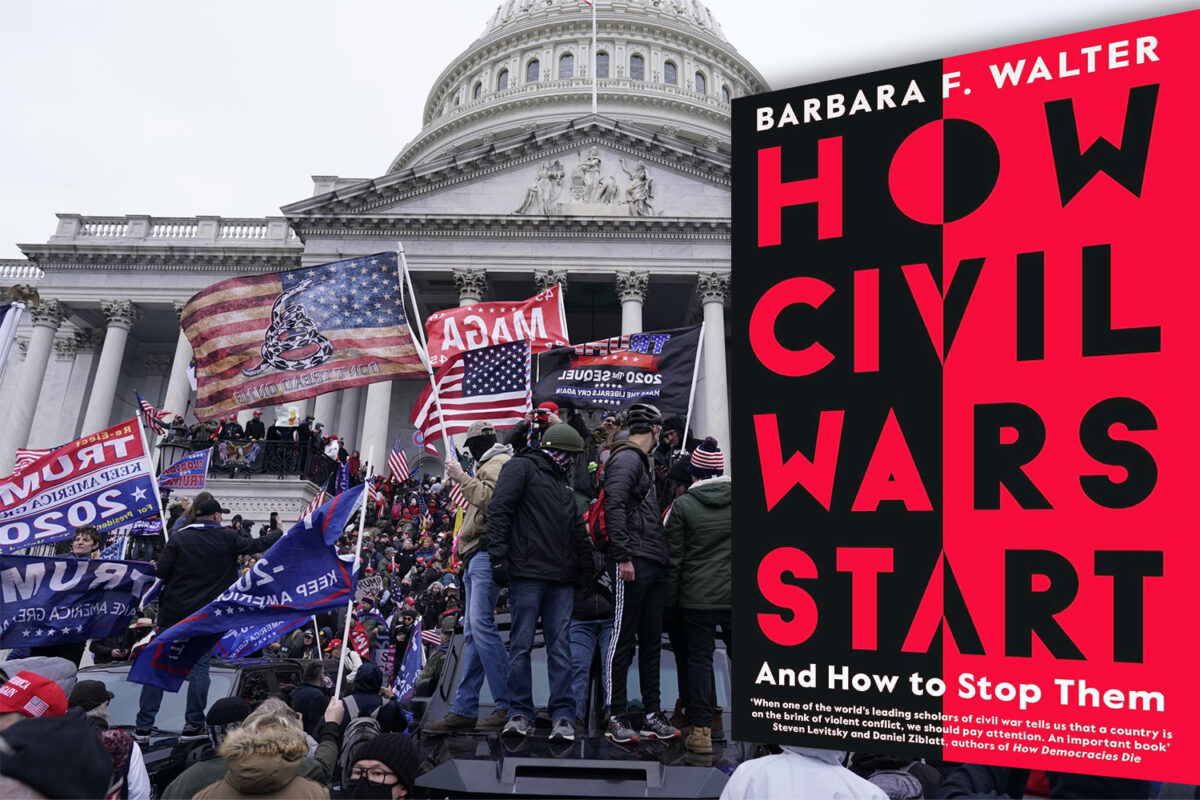Cold War in the Islamic World: Saudi Arabia, Iran, and the Struggle for Supremacy
Dilip Hiro
2018
 As an avid reader of geopolitical literature, I found myself engrossed in Dilip Hiro’s masterful work, Cold War in the Islamic World: Saudi Arabia, Iran, and the Struggle for Supremacy. Hiro is the prolific author of over 30 books. Delving into the complexities of the Saudi Arabia-Iran rivalry, he provides a captivating and comprehensive analysis of the ongoing power struggle that has significantly shaped the Middle East.
As an avid reader of geopolitical literature, I found myself engrossed in Dilip Hiro’s masterful work, Cold War in the Islamic World: Saudi Arabia, Iran, and the Struggle for Supremacy. Hiro is the prolific author of over 30 books. Delving into the complexities of the Saudi Arabia-Iran rivalry, he provides a captivating and comprehensive analysis of the ongoing power struggle that has significantly shaped the Middle East.
One of the highlights of this book is Hiro’s attention to detail and extensive research. His writing is both accessible and engaging, making the intricate political dynamics of the Middle East understandable to a broad audience without oversimplifying the issues.
The book commences by laying a solid historical foundation, tracing the roots of Saudi Arabia and Iran’s animosity back to the seventh century. Hiro brilliantly sets the stage, helping readers understand the cultural, religious, and geopolitical underpinnings that have fueled their fierce competition for regional dominance.
As the modern custodian of Islam’s two holiest cities (Makkah and Madinah), Saudi Arabia’s roots as the bastion of Wahhabi Islam pitted it against the Ottomans on several occasions. The Sa’ud family is notorious for its secret alliance with the British to cause strife and disorder within the Ottoman state. As a reward for its support of the British before and during World War I, they were accorded the Hejaz. The British also promised Sheriff Hussein the same region but he was beaten to it by the Saudis’ impeccable service to the British. They went on to occupy Najd as well and renamed the entire area (Hejaz and Najd) Saudi Arabia.
Since discovering oil riches, the role Saudi plays in the Muslim world became more significant. It has sought to exert its influence over the Islamic world by hosting Hajj, sponsoring the building of huge mosques, and offering full-paid scholarships to its prominent universities. This has seen the influx of Wahhabi-minded scholars all over the world.
On the other hand, Iran, with its rich Persian heritage and fervent Shia Islamic ideology, aims to champion itself as the vanguard of the Muslim world, especially among Shia populations.
Hiro skillfully navigates through the chapters, elucidating various critical phases in the Saudi Arabia-Iran rivalry. The emergence of Ayatollah Khomeini’s Islamic Republic in Iran in 1979 shook the established order in the Middle East, instilling fear and concern in Saudi Arabia. The ensuing decades witnessed a series of proxy wars, including the Iran-Iraq War and the ongoing conflicts in Syria and Yemen, which have shaped the region’s geopolitics.
The author’s exploration of the Cold War’s influence on the Islamic world is commendable. He dissects how the United States and the Soviet Union, driven by their strategic interests, played a significant role in exacerbating the tension between Saudi Arabia and Iran. The book sheds light on the involvement of these global players in shaping the regional policies of both nations, which has had far-reaching consequences for the entire Middle East.
Furthermore, the book uncovers the ideological and sectarian dimensions of the rivalry, which has served to deepen a chasm among Muslims that was first instituted by nationalism through the Sykes-Picot agreement. Hiro deftly examines how the Sunni-Shia divide plays a pivotal role in the power struggle between Riyadh and Tehran, exacerbating tensions and proxy conflicts across the region.
As the narrative progresses, the book brings the focus to contemporary events, highlighting the impact of the Arab Spring, the rise of ISIS, Muhammad Bin Salman, and the Iran nuclear deal on the geopolitical landscape of the Islamic world. These sections offer readers a comprehensive understanding of how internal and external forces have shaped the Saudi-Iran rivalry in recent times, with implications for regional stability.
The author also delves into the intricate web of alliances and relationships that both Saudi Arabia and Iran have cultivated with other Middle Eastern nations. From Lebanon’s Hezbollah to Iraq’s Shia-led government and the Gulf Cooperation Council states, these alliances often add further complexity to the power struggle in the region. Perhaps more salient is the underground alliances between Saudi and Israel.
Saudi support, which includes funding for Israeli activities, was also captured. In recent years, normalizations between Saudi-influenced countries and Israel have taken place. Countries like Morocco and Sudan ended rhetorical hostilities to practically recognize Israel as a nation to secure benefits from the Saudis and the West. Clearly, this development has wide-ranging negative effects on the Muslims in Palestine in particular. Saudi Arabia’s antennae have always been to keep Iran at bay, utilising all sorts of means to tarnish Iran’s image. This is because the strongest, most influential of the two stands to be favoured by the US. This was seen between the late 90s and early 2000s when relations between the two countries were slowly rejuvenated after it collapsed in the 1980s.
In conclusion, there is much more offered by the book. Cold War in the Islamic World: Saudi Arabia, Iran, and the Struggle for Supremacy is an illuminating and thought-provoking examination of the intricate power play between two regional heavyweights and how external powers (mainly the US and Britain) take advantage of the rift to serve their global interests. Dilip Hiro’s expertise in unravelling complex geopolitical matters shines through, making this book a must-read for anyone seeking to comprehend the ever-evolving landscape of the Middle East.




